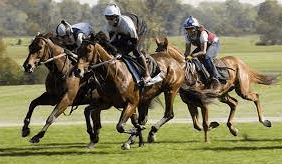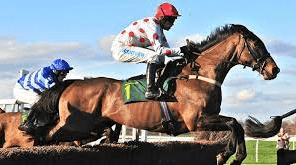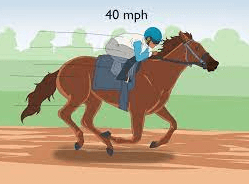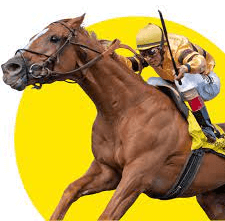Are There Any Safety Measures In Place For The Welfare Of The Horses And Jockeys During Races?

In the realm of horse racing, the safety and well-being of both horses and jockeys are paramount concerns. With the inherent risks associated with high-speed races, measures have been implemented to ensure the welfare of these athletes.
This article explores the various safety measures in place for the protection and care of horses and jockeys during races.
Track surfaces and course design play a crucial role in minimizing injuries during horse races. The condition of tracks is regularly assessed to maintain an optimal surface that provides adequate traction while reducing strain on horses’ legs. Additionally, course designers consider factors such as turns, gradients, and obstacles to create a layout that minimizes potential hazards. These precautions aim to prevent accidents or falls that could endanger both horses and jockeys.
Moreover, medication and equipment regulations are strictly enforced to safeguard equine athletes’ welfare throughout races. Regulatory bodies establish guidelines regarding permissible substances and their administration to ensure fair competition while prioritizing the health of horses. Similarly, equipment used by jockeys, such as saddles and reins, undergo rigorous inspection to guarantee their functionality without compromising safety. By implementing stringent regulations in these areas, racing authorities strive to maintain a level playing field while safeguarding the well-being of participants.
Track Surfaces and Course Design
Track surfaces and course design play a crucial role in ensuring the safety and welfare of horses and jockeys during races.
Track maintenance is essential to ensure that the surface is even, free from debris, and provides consistent footing for the horses.
Regular maintenance includes harrowing, watering, rolling, and leveling the track to maintain its integrity.
Additionally, weather conditions greatly affect the track surface, as excessive rain can lead to a muddy or slippery track, increasing the risk of accidents.
Therefore, race organizers closely monitor weather forecasts and take necessary precautions such as covering tracks or postponing races if conditions are unfavorable.
By prioritizing proper track surfaces and course design along with proactive maintenance measures that account for varying weather conditions, race organizers strive to create a safe environment that minimizes risks for both horses and jockeys.
Medication and Equipment Regulations
The regulations pertaining to medication and equipment in horse racing are crucial for ensuring the utmost care and protection of horses and jockeys, evoking a sense of concern for their well-being.
Medication regulations aim to prevent the use of performance-enhancing drugs or substances that can potentially harm the horses’ health. These regulations govern which medications are allowed, their dosage limits, and how long before a race they must be withdrawn to minimize any potential adverse effects on the horses’ performance or welfare.
In addition to medication regulations, there are also strict guidelines governing the use of equipment in horse racing. This includes rules on saddle design, whip usage, and safety gear requirements for jockeys. The goal is to ensure that all equipment used is safe and does not cause unnecessary discomfort or harm to the horses during races.
By implementing these regulations, authorities aim to maintain a level playing field while prioritizing the welfare of both horses and jockeys in horse racing competitions.
Safety Vests and Helmets for Jockeys
Jockeys in horse racing competitions are required to wear safety vests and helmets as a means of enhancing their protection and minimizing potential risks. Safety vest regulations ensure that jockeys have the necessary gear to protect their torsos during races. These vests are designed to absorb impact and provide added support to vital organs, reducing the risk of serious injury.
Additionally, helmet standards dictate that jockeys must wear protective headgear that meets specific safety requirements. Helmets are crucial in preventing head injuries and concussions, which can have long-lasting effects on a jockey’s well-being.
By implementing these safety measures, race organizers prioritize the welfare of both horses and jockeys while promoting a safer environment for all involved.
1) Safety vests give jockeys peace of mind knowing they have an extra layer of protection against falls or collisions.
2) The use of helmets ensures that jockeys reduce the risk of head injuries, allowing them to continue their careers without compromising their health.
3) Strict safety vest regulations show a commitment from race organizers towards creating a safe environment for all participants.
4) Meeting helmet standards demonstrates the importance placed on preserving the physical well-being of jockeys, acknowledging their value as athletes deserving proper protective gear.
Veterinary Care and Inspection Protocols
Regular veterinary check-ups for horses are an essential component of ensuring their well-being and health. These check-ups involve thorough examinations, including physical assessments, vaccinations, dental care, and addressing any underlying medical conditions.
Additionally, pre-race inspections and health screenings play a crucial role in safeguarding the welfare of the horses by assessing their fitness to participate in races and identifying any potential issues that may compromise their performance or safety.
Regular veterinary check-ups for horses
Veterinary check-ups ensure the horses’ well-being and monitor their physical condition throughout races.
Regular veterinary check-ups are an essential aspect of ensuring the welfare of racehorses.
These check-ups involve thorough examinations by qualified veterinarians who assess various aspects of the horse’s health, including its overall physical condition, musculoskeletal system, cardiovascular health, and respiratory function.
By conducting these regular check-ups, veterinarians can detect any potential issues or injuries early on and provide appropriate treatment or intervention to prevent further harm.
Additionally, these check-ups enable veterinarians to monitor the horse’s fitness level and make necessary adjustments to its training regimen to maintain optimal performance while minimizing the risk of injury.
Overall, regular veterinary check-ups play a vital role in safeguarding the welfare of racehorses by actively monitoring their health and taking proactive measures to ensure their well-being throughout races.
Pre-race inspections and health screenings
Pre-race inspections and health screenings are akin to a meticulous examination of a thoroughbred’s physical condition, ensuring that all necessary precautions are taken before the race commences. These comprehensive assessments involve an array of measures aimed at optimizing the horses’ welfare and minimizing the risk of injuries.
Firstly, veterinarians thoroughly examine the horse’s body, paying close attention to any signs of lameness or discomfort. This helps identify potential issues that could be aggravated during the race.
Secondly, blood tests are conducted to check for any abnormalities or underlying health conditions that may pose a risk to the horse’s performance or well-being.
Additionally, trainers closely monitor the horses’ training routines and feed intake leading up to the race, making adjustments as needed to ensure their optimal fitness levels.
By implementing these pre-race preparations and injury prevention techniques, racing authorities demonstrate their commitment towards safeguarding both horses and jockeys during races while striving to uphold their audience’s subconscious desire for freedom.
Training and Conditioning Programs
Training and conditioning programs play a crucial role in ensuring the physical well-being of both horses and jockeys during races, promoting their optimal performance while minimizing the risk of injuries. These programs focus on various aspects such as horse nutrition and injury prevention.
Proper nutrition is essential to maintain the overall health and fitness of the horses, as it provides them with the necessary energy and nutrients for their rigorous training routines. Additionally, conditioning programs aim to strengthen the muscles, improve endurance, and enhance flexibility in both horses and jockeys.
By implementing these programs, trainers can help prevent injuries by ensuring that horses are adequately prepared for the physical demands of racing. This includes incorporating exercises that target specific muscle groups used during races, as well as gradually increasing intensity to avoid strain or overexertion.
Overall, training and conditioning programs are an integral part of safeguarding the welfare of horses and jockeys during races by promoting their physical well-being and minimizing the risk of injuries.
Emergency Response and Medical Facilities
In the event of emergencies, race tracks are equipped with medical facilities and trained personnel to provide prompt and efficient care for both equine athletes and riders. These emergency response measures ensure the welfare and safety of horses and jockeys during races.
Here are some key aspects related to emergency response and medical facilities:
- Emergency Response Training: Race tracks have comprehensive training programs in place for their staff members to handle emergencies effectively. This includes training on how to respond to injuries or accidents that may occur during a race. Personnel involved in these training programs undergo rigorous instruction, ensuring they are well-prepared to handle any situation that arises.
- Medical Personnel Availability: Race tracks also have medical personnel readily available on-site during races. These professionals specialize in providing immediate medical attention to injured jockeys or horses, minimizing the risk of further harm. Their expertise allows them to assess injuries quickly, administer first aid if necessary, and determine whether additional medical intervention is required.
- Equipped Medical Facilities: To facilitate prompt treatment, race tracks are equipped with state-of-the-art medical facilities. These facilities include ambulances, equine-specific treatment areas, and equipment necessary for initial assessment and stabilization of injured individuals. Having these resources readily available at the track ensures that any potential injury can be addressed swiftly.
- Collaboration with Local Hospitals: In addition to on-site medical facilities, race tracks often collaborate with nearby hospitals or trauma centers. This partnership allows for seamless transfer of injured jockeys or horses requiring advanced care beyond what can be provided at the track’s facility.
- Constant Monitoring: To maintain safety standards throughout a race, officials closely monitor both jockeys’ behavior and horse performance. If any signs of distress or potential injury arise during a race, immediate action can be taken by notifying relevant authorities who will promptly attend to any concerns.
These measures work together to create an environment where emergency situations can be handled efficiently while prioritizing the welfare of horses and jockeys. By ensuring that well-trained personnel and proper medical resources are readily available, race tracks take significant steps in safeguarding the participants’ well-being during races.
Public Awareness and Education
Public awareness and education play a crucial role in promoting the understanding of safety protocols and risk management within the context of horse racing events.
Public outreach initiatives and safety workshops are essential components of these efforts.
By conducting public outreach campaigns, race organizers can raise awareness about the importance of safety measures for both horses and jockeys.
These campaigns can include educational materials, such as brochures or online resources, that provide information on topics like proper racehorse care, injury prevention strategies, and emergency response procedures.
Additionally, safety workshops can be organized to educate trainers, jockeys, and other stakeholders about best practices in horse racing safety.
These workshops can cover topics such as track maintenance, proper equipment usage, and first aid training.
Through these initiatives, the racing community can foster a culture of safety consciousness where everyone involved understands their responsibilities towards ensuring the welfare of horses and jockeys during races.
Research and Development in Safety Measures
Research and development in safety measures for horse racing events is a key component in ensuring the continuous improvement and evolution of protective protocols.
Safety innovations are constantly being explored and implemented to reduce the risks associated with horse racing.
These measures aim to protect both horses and jockeys, as their welfare is of utmost importance.
One sub-list of safety innovations includes advancements in helmet technology, such as the use of lightweight yet durable materials that provide enhanced protection against head injuries.
Another sub-list involves improvements in track surfaces, which are designed to minimize the risk of accidents by providing optimal traction and cushioning for the horses’ hooves.
These research efforts demonstrate a commitment to enhancing safety standards within the horse racing industry, ultimately contributing to a safer environment for everyone involved in these events.
Monitoring and Evaluation of Safety Measures
Continuing the exploration of safety measures in horse racing, it is crucial to delve into the monitoring and evaluation of these measures. This allows for a comprehensive understanding of their effectiveness and helps in identifying areas for improvement.
To ensure that safety measures are indeed safeguarding the welfare of horses and jockeys, thorough evaluation criteria need to be established. These criteria should encompass various aspects such as injury rates, track conditions, veterinary care, and compliance with regulations.
Additionally, data collection plays a vital role in this process by providing objective evidence on the impact of safety measures. By analyzing relevant data, race organizers can gain insights into any patterns or trends related to injuries or accidents during races. This information is invaluable for making informed decisions regarding adjustments or enhancements to existing safety protocols.
Frequently Asked Questions
How often are track surfaces and course designs assessed for safety?
Track maintenance and course design are regularly assessed for safety. This ensures that the track surfaces are in optimal condition and that the course design minimizes risks for horses and jockeys, prioritizing their welfare during races.
Are there any restrictions on the types of medication and equipment that can be used during races?
Restrictions on medication and equipment in horse racing ensure fairness and safety. Medications are regulated to prevent performance-enhancing substances and protect horse welfare. Equipment rules aim to balance competitive advantage with animal welfare concerns, promoting a level playing field for all participants.
What are the regulations regarding safety vests and helmets for jockeys?
Regulations on safety vests and helmets for jockeys are crucial to ensure the welfare of jockeys during races. These safety measures prioritize the protection of jockeys, highlighting the importance of appropriate safety equipment in the racing industry.
How often are horses subjected to veterinary care and what are the inspection protocols?
Horses in racing are subjected to regular veterinary care and undergo inspection protocols to ensure their health and well-being. The frequency of veterinary care and the specific inspection protocols vary depending on the racing jurisdiction and race organization.
Are there any specific training and conditioning programs in place to ensure the safety of horses and jockeys during races?
Training techniques and conditioning programs are implemented to ensure the safety of horses and jockeys during races. These programs focus on injury prevention through proper exercise, nutrition, and monitoring of the horse’s physical condition.
Conclusion
In conclusion, the safety measures in place for the welfare of horses and jockeys during races are comprehensive and continuously evolving. These measures encompass various aspects such as track surfaces and course design, medication and equipment regulations, safety vests and helmets for jockeys, veterinary care and inspection protocols, training and conditioning programs, emergency response and medical facilities, public awareness and education, research and development in safety measures, as well as monitoring and evaluation.
The implementation of these safety measures is crucial to ensure the well-being of both horses and jockeys. By carefully designing tracks with suitable surfaces that minimize the risk of injuries, race organizers prioritize the safety of all participants. Strict regulations regarding medication use and equipment standards help prevent any unfair advantages or potential harm to the animals. Furthermore, mandatory safety vests and helmets protect jockeys from serious head injuries during falls or collisions.
Regular veterinary care ensures that horses are fit to compete while inspection protocols guarantee their overall health before participating in races. Training programs focus on enhancing horse fitness levels to reduce the likelihood of accidents caused by fatigue or physical limitations. In case of emergencies or injuries on the track, immediate access to medical facilities ensures prompt treatment for both horses and jockeys.
Public awareness campaigns educate spectators about racing rules, animal welfare considerations, as well as encouraging responsible gambling practices. Additionally, ongoing research is dedicated to developing innovative safety measures that can further enhance horse racing’s integrity while protecting its participants.
However thorough these efforts may be in ensuring horse welfare during races; it begs us to question if they are sufficient? Are there any other areas where additional precautions can be taken?
The wellbeing of these magnificent creatures should always be paramount – not just during races but throughout their entire lives.



